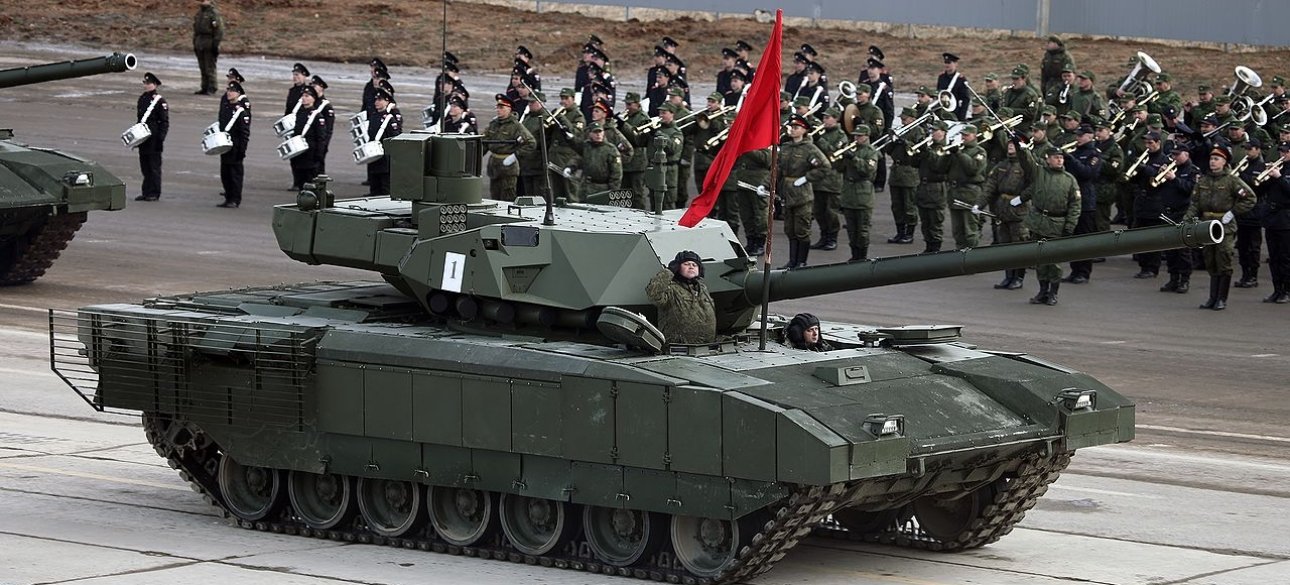
 By Victor Duda
By Victor Duda
For a long time, the mythical tank of T-14 "armata" was considered one of the businesses of the military-industrial complex of the Russian Federation, which mainly exploited the Soviet deals, but did not create completely new, unique specimens. This tank was not only attributed to supernatural features, but also prophesied thousands of orders.
Only think, but in September 2015, the General Director of the Uralvagonzavod Scientific and Production Corporation (UPZ) Oleg Sienko stated that by 2020 the Russian army will receive 2300 tanks on the basis of armata armature platform! Meanwhile, outside the window of September 2023, and at the disposal of the Russian army-just a research party of two mouths. The T-14 T-14 T-14, despite the promises of officials about large orders and mass production, is not largely in the Russian army.
He, despite the assurance of Russian propaganda, is not used in hostilities in Ukraine. And he never received any export order. So what's wrong with this tank? When Armat was presented on Red Square in Moscow in 2015, during the rehearsal, everyone could watch how the combat vehicle just died down and had to evacuate it. Even then, it was clear that the product is raw and has a number of technical shortcomings, for example, with a transmission.
And these problems manifested themselves regularly, until recently. In August this year, at the Army-2023, the organizers decided to roll out T-14 "Armat" on the landfill and show what the tank is capable of. At first glance, the tank traveled and fired - but this is the first, unprofessional look. The tank on a virtually flat surface (concrete and crushed stone) rolled up, squeezed, fired at low speeds and in braking.
All this indicated that "Armat" since 2015 could not get rid of her "childhood diseases", which became chronic. In addition, the demonstration performance of the tank raised many questions to the fire control system (SKV). And now, let's imagine a tank that is not able to ride in the rough terrain, has problems with SCV, can die in the middle of the field. What is this tank? That's right, it's not a tank, but a perfect goal. In addition, T-14 "Armata" has other problems-not technical order.
The fact is that T-14 "Armata" is a tank that stands out from the general concept of Soviet basic combat tanks with its excessive profile. In many ways, this is due to the deadlock of the development of the motor-transmission department (MTV), but not only. However, the tank has a body length about 11 meters, which is 1. 5 times more than in T-72 and T-90. No matter how strange it may sound, but the sizes matter, and large sizes create big problems.
And it's not just about a high profile that an opponent can see from afar. All tank boxes in the Russian parts are adapted to the content of the Soviet line of the main combat tanks-T-72, T-80, T-90. In addition to boxing problems, the size of the tank maintenance occurs due to the size, taking into account its extremely high gas release and engine maintenance features for which special equipment is required.
For example, the process of cleaning the nozzles should be carried out outside the box using a repair and evacuation machine (Bram). Such difficulties are caused by the fact that on the engine 2V-12-3a cylinders are placed both from above and from below, even though there is a radiator on top of the power plant. That is why even the process of maintaining a tank in/h, not to mention field conditions, is a very time -consuming activity.
The mass production of them adds headache in the form of a question of keeping in boxes that are not adapted to them. So it turns out that initially a large -scale reconstruction of the in/h, and later the mass production of tanks. But is it possible? Recalling Sienko's statement about serial production in 2300 tanks by 2020 - is it possible at all? Even before 2030? The fact is that in Russia the mass production of tanks from scratch has long been stopped.
For example, from scratch tanks T-72 and T-80 have not been manufactured since 1998, and the T-90 has been stopped in 2011. During this time, the zero cycle production lines were disassembled, sold, melted. The forms are launched on scrap, the tools are similarly launched by peace. And the most striking confirmation of this is the words of the general director of "Uralvagonzavod" by Alexander Potapov that the UPZ will restore the production of T-80 tanks from scratch . . .
And what was the question? And there was repair and modernization of the Soviet precursors, which are stored hundreds and thousands, which only confirms the lack of production of tanks in Russia from scratch. And it will not be easy to restore it. There are no necessary molds, no tools, there are no machines, no specialists who will prepare and the basic acquisition of experience will take a minimum of 4 to 5 years.
In fact, up to 30,000 technical and technological chains should be used for the production of a tank. In the case of T-14 "Armat" these chains are more, with the tank itself gathered artificially, not automated processes, and, say, manually. There is no well -established process of work of thousands of molds, no tools and a line of harvesting. T-14 "Armata" is a more tank from the garage than a tank from the factory. And not only he is alone. Each element is a hand -assembled artificial product.
For example, the 2B-12-3a engine is not going on the production line, it is an artificial product of a circle of her motorists, and for its mass production there is no appropriate line. T-14 "Armata" is a tank that will never be able to bring to a capable state. It will not be able to produce mass due to the lack of appropriate production lines. In order to keep it in the army, it is necessary to rebuild all the in/h where it will be.










All rights reserved IN-Ukraine.info - 2022